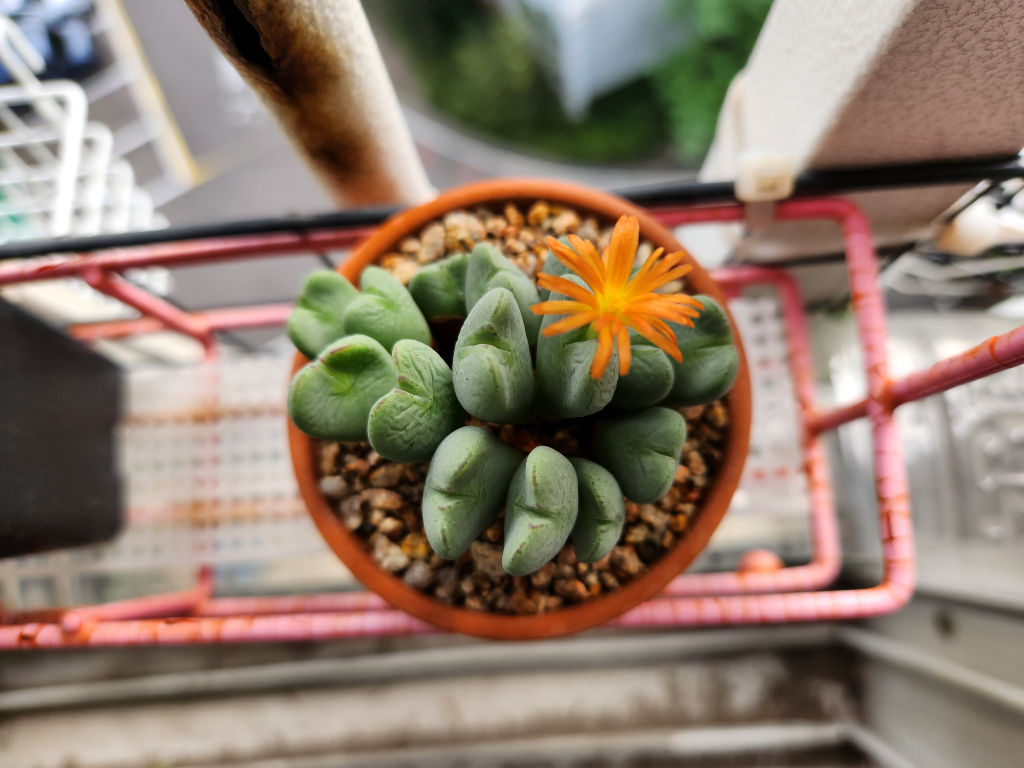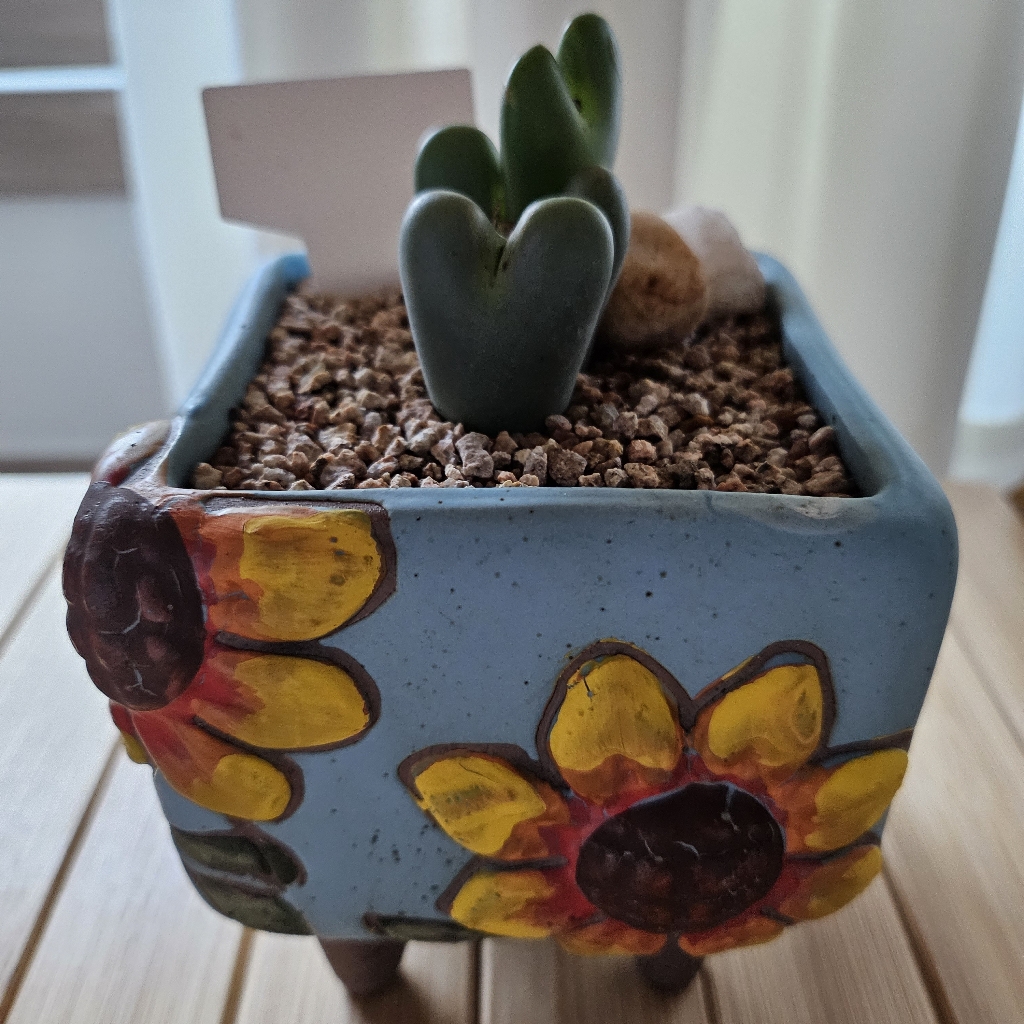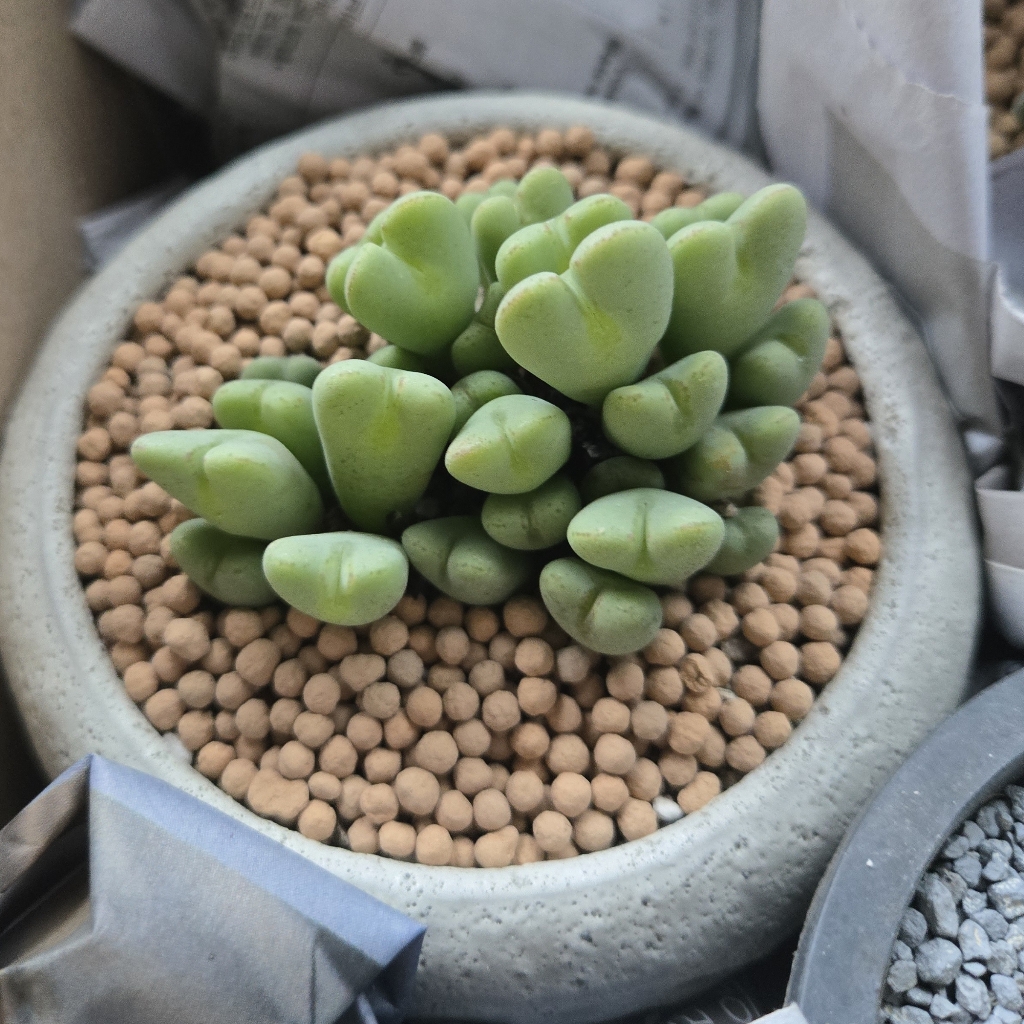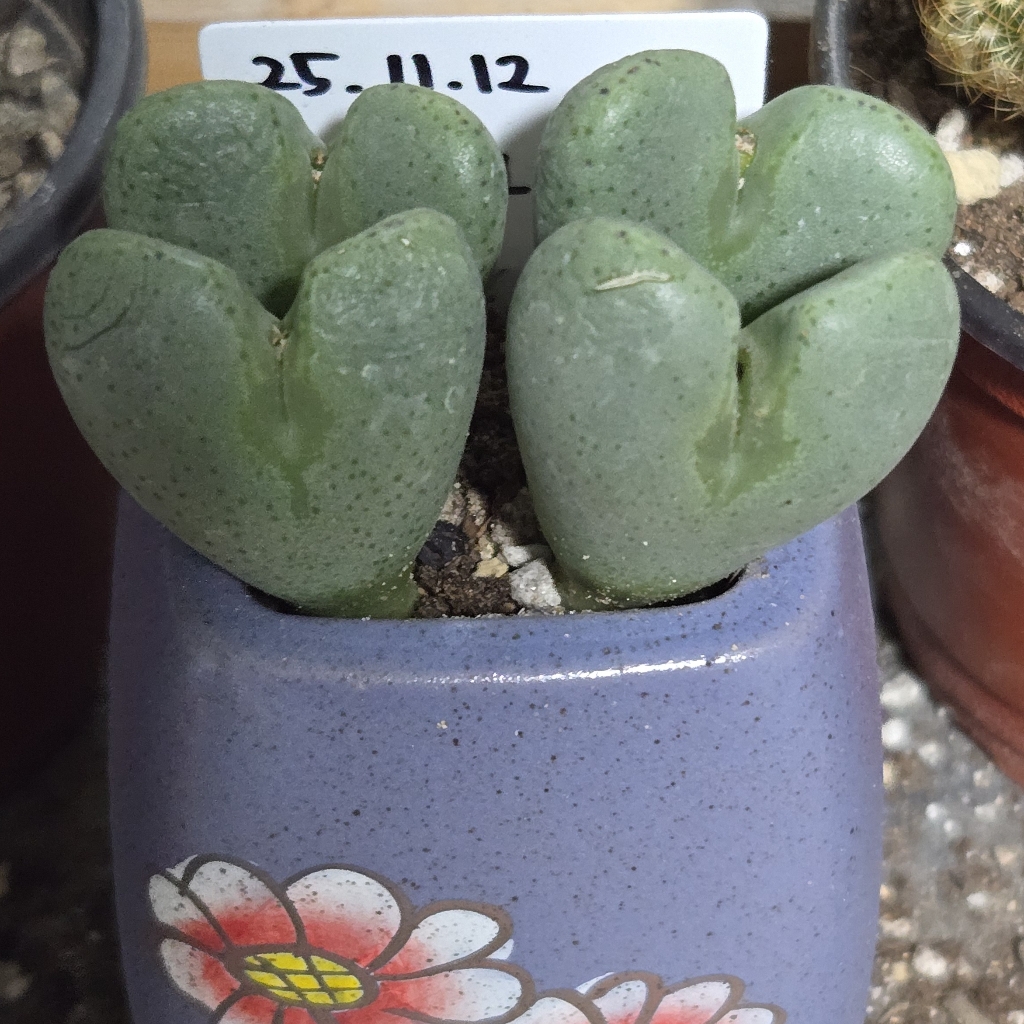How to grow and care for conophytum bilobum
plant care guide about watering, fertilizing, trimming, repotting, cutting, propagating conophytum bilobum
conophytum bilobum 101 - Plant Care Instructions
Bright direct light
18C° ~25C°
Every 14 days
Growth Observation wiki
Botany Encyclopedia
Genus : Conophytum
🔖 Care Tips
Plants grow through a process called shedding, typically in summer, but sometimes in spring or fall. Before shedding begins, leaves become wrinkled and change color. Avoid forcibly removing leaves to prevent damage. Shedding usually takes about a month, but can take 2-4 weeks longer depending on the plant. Plants generally grow from fall to spring (September to May) and enter dormancy in summer (June to August). When planting seeds, it's best to do so in fall to avoid the hot and humid summer. Maintain temperatures of 15-20°C during the day and 5-10°C at night for better germination rates. Use bottom watering until the surface is moist, then cover with plastic wrap or a lid to maintain humidity. Ventilate periodically to prevent overwatering and keep the surface from drying out. Germination takes 1-3 weeks, and once over 50% of seeds have germinated, gradually increase light exposure in a cool place. The first shedding occurs approximately 4-6 months later.
🏝️ Habitat Conditions
This plant grows in the deserts of South Africa. It prefers hot and dry conditions in summer, and cold and humid environments in winter.
🪨 Soil Mix
Plants that prefer dry environments should be planted in well-draining soil. Typically, succulents use a soil mix of potting soil and pumice in a 3:7 ratio. However, this ratio can vary depending on the situation and environment.
🌡️ Environment
This plant thrives at temperatures between 15-25°C. Be cautious as it can suffer from cold damage if the temperature drops below 1°C. It grows well mainly from the cool autumn to spring. If the humidity is too high, the plant may become soft. Especially in summer, use a fan or circulator to ensure good air circulation.
👀 Characteristics details
When multiple plants are grown together, they may not increase in size even after shedding.
☀️ Light
Direct sunlight can change the color of the leaves. Place the plant in a bright area away from direct sunlight. Be cautious, as insufficient light can cause the plant to grow long. In summer, use a 50% shade cloth to filter the sunlight.
💧 Water
After shedding, the plant starts to grow, so gradually increase watering. From fall to spring, water thoroughly when the soil is completely dry. During summer dormancy, water lightly just to moisten the surface when the soil is dry. Avoid watering plants during shedding. If the leaves become wrinkled, it's a sign of water deficiency, so water them. As this is a CAM plant, it's better to water at night rather than during the day.
🌱 Propagate
Most plants double in size with each molting, and sometimes they can increase by 3 to 4 times. It is common to propagate by dividing the plant during repotting. Alternatively, propagation can be done by germinating seeds. To produce seeds, flowers need to be pollinated. Planting flowers in the same pot can synchronize their blooming times, so it's best to plant at least two specimens in one pot to see them bloom simultaneously. Since the flowers are not self-pollinating, you need to use a cotton swab or brush to manually pollinate flowers from at least two different plants to produce seeds. The flower stalk is long, so pollen must be applied deep inside for successful pollination.
🪴 Repot
Repotting is best done between September and November, every 2-3 years, after the plant has finished shedding. Delaying this may result in slower root development due to cold weather. The plant has a tendency to develop deep roots, so it is best to plant it in a deep pot. However, it forms shorter roots than Lithops, so a shallower pot than that used for Lithops is preferable.
💊 Fertilize
During the growing seasons of fall and spring, using fertilizer once each while adhering to the recommended amount can promote more vigorous growth.
🌺 Flower
Most plants bloom after shedding leaves in the fall. Since the flowers are not self-pollinating, use a cotton swab or brush to artificially pollinate flowers from two or more plants to produce seeds. The flower stalk is long, so pollen must be applied deeply for successful pollination. Be careful not to let the flowers get wet, as this will shorten their lifespan.
😵 Toxicity
Non-toxic and safe for pets and children.
water
How to water conophytum bilobum
💬 Gardener's know-how
How often should I water?
check conophytum bilobum Every 14 days if it needs water when it’s very cold (below 5℃), water less frequently
When do I need to water?
The soil should be at least 90% dry before watering again. this means about every 2 weeks in the warm season and about every 4 weeks in the cold season
Signs that it really needs water
leaves look a little wrinkled
Light & Location
How much light does a conophytum bilobum need?

Bright direct light
Grow light
Light preference
conophytum bilobum likes Bright direct light, Grow light day. The brighter the space, the better this plant grows.
Check if there’s an optimal place in your house!
This plant prefers
2K ~ 20K lux to thrive!
0
20K~
2K
20K
Temperature
Houseplants
-15
18~25℃
45
Plants that grow in the wild and those that grow indoors prefer different temperatures. If you grow conophytum bilobum at home, make sure the temperature is 18~25℃.
Humidity
Ideal humidity
0
20~50%
100
conophytum bilobum prefers humidity about 20~50%. If necessary, increase humidity by misting, humidifier.
Fertilize
Collective Knowhow
When should I fertilize?
Only when your plant is healthy
How frequently should I fertilize?
1-2 times in growing season. A pinch for a small pot.
Characteristic
The taxonomic classification of conophytum bilobum is as follows. - Kingdom: Plantae, Phylum: Tracheophyta, Class: Magnoliopsida, Order: Caryophyllales, Family: Aizoaceae, Genus: Conophytum, Species: conophytum bilobum
| Characteristic Name | Characteristic Value |
|---|---|
| Habitat | South Africa |
| Taxonomy Name | Taxonomy Value |
|---|---|
| Phylum | Tracheophyta |
| Class | Magnoliopsida |
| Order | Caryophyllales |
| Family | Aizoaceae |
| Genus | Conophytum |
| Species | conophytum bilobum |
Is your plant sick?
Track what happened. We’ll let you know the cause and treatment shortly!





1:1 Expert Help
You’ll get professional feedback within 24 hours from an expert on our team.
feedback will include















